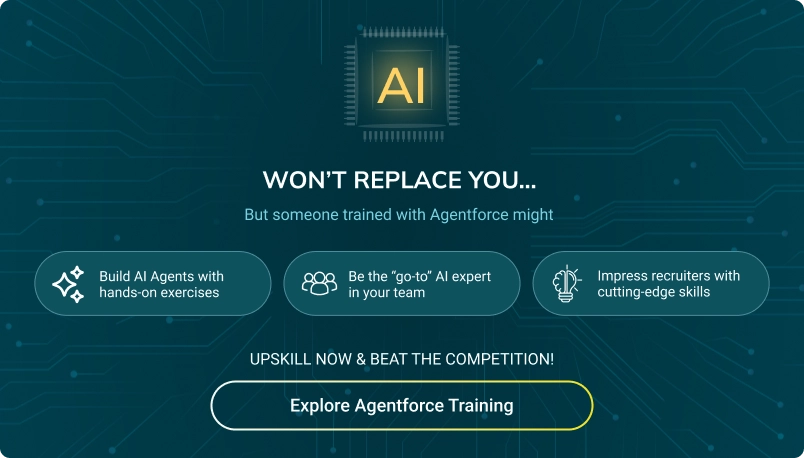Table of Contents
Automation testing is one of the most important skills in software development because it transformed the industry through its outstanding results. Businesses are increasingly utilizing automated testing techniques to improve the speed and efficiency of their release cycles, which is why there is an essential demand for automation testing experts.
Whether you are just starting or have been working as a tester for a while, learning automation will help you pass interviews for higher roles on the first go.
This blog will provide you with popular automation testing interview questions that vary according to your expertise level.
Automation Testing Interview Questions for Freshers
If you are new to automation testing, the interviewer may be predominantly keen to know the basic level of understanding of automation testing. The common automation testing interview questions for freshers include:
1. How would you explain the meaning of Automation Testing?
Automation testing refers to the application of tools and scripts to run tests against a software application automatically, which reduces the need for individuals to run tests manually. It essentially and effectively speeds testing processes, ameliorates testing accuracy, and automates repetitive duties.
2. Compare manual testing with automation testing.
Manual Testing is when a human being runs test cases. Automation Testing is when the tests run using a tool or script file. Automation Testing is quicker and more consistent/reliable when performing repetitive testing. Manual Testing is better for test cases that require observation and human effort than simply looking at some numbers or reports.
Read More:
Manual Testing vs Automation Testing
3. When do we need manual testing over automation testing?
Manual testing is needed when human judgment or creativity is important. This includes tasks like exploratory testing, where testers freely check the system for issues, or usability testing, where they see how real users interact with the product. Manual testing is also better for short-term projects or when things change often, making automation too time-consuming. It’s useful for tasks that are done once or don’t happen often, where setting up automation would take more effort than it’s worth.
4. Explain the Software Testing Life Cycle (STLC).
The Software Testing Life Cycle (STLC) comprises six phases: requirement analysis, test planning, test case development, environment setup, test execution, and test closure. Each phase includes unique deliverables and objectives contributing to the software testing process.
5. When will you avoid automated testing?
Automated testing should be avoided when the project is short-term, tests change often, or exploratory and usability tests are necessary. Automation is also avoided when the initial setup cost is more expensive than the return.
6. What are implicit and explicit waits in Selenium?
Implicit waits instruct Selenium to wait for a specific period before issuing an error. Explicit waits are used when criteria must be met before proceeding to the next execution step.
7. What is a Test Environment?
A test environment is the setting used to test software. It comprises hardware, software, network configuration, and other components that simulate real-world usage settings to ensure reliable test results.
8. Who should be responsible for Test Automation?
Test automation is often a joint duty of developers and testers. Testers create and run automated tests, while developers can help by defining testable code and developing unit tests.
9. What are the limitations of Automation Testing?
Automation testing has limitations like high initial setup costs, difficulty automating complicated or dynamic test scenarios, and challenges sustaining automated tests as the program evolves.
10. What are the benefits of Automation Testing?
Multiple benefits of using automation testing include:
- Quick Execution
- Better Accuracy
- Ability to run tests 24×7
- Reusability of Scripts
- Improved Test Coverage
- Reduced Manual Efforts
Automation Testing Interview Questions for Intermediate
As a tester, if you have working experience of a few years, interviewers will ask more technical and real-world applicable questions related to automation testing.
11. What is a test script?
A test script is a set of instructions written in a programming or scripting language that automates the testing process. It executes predefined actions on the application under test (AUT) to validate its functionality.
12. What is an automation testing framework?
An automation testing framework is a structured approach to automating tests, defining how to efficiently organize and execute automated test scripts. It standardizes testing processes and ensures the reusability and maintainability of scripts.
13. What types of testing frameworks are available in the industry?
Common types of testing frameworks include:
- Data-driven frameworks
- Keyword-driven frameworks
- Modular testing frameworks
- Hybrid frameworks
- Behaviour-driven development (BDD) frameworks
14. What are some ideal and non-ideal cases for using automation testing?
Ideal cases include repetitive tasks, regression testing, and large-scale projects. Non-ideal cases are exploratory testing, frequently changing test cases, and scenarios requiring human judgment.
15. Do you expect automation testing to replace manual testing? If NO, then why?
No, automation testing cannot completely replace manual testing. Manual testing is necessary for exploratory, usability, and ad-hoc testing, where human intuition and observation are required.
16. Can we achieve 100% automation in any case scenario?
Achieving 100% automation is unlikely. Specific tests, especially those involving visual checks, usability, or human interaction, will always require manual testing.
17. What is Selenium? What are its pros and cons?
Selenium has been the most widely used tool for automating browsers to be used in testing. It is an open-source tool, and through it, testers can write scripts to click on buttons, fill out forms, navigate web pages, which makes the utility of the tool useful for cross-browser testing of a web application. It supports more than one programming language, such as Java, Python, and C#, and so on. In the latest version, Selenium 4, it has added relative locators and made improvements in browser compatibility. Selenium has three core packages: Selenium WebDriver for development, Selenium IDE for ease, and Selenium Grid for distribution.
Pros: It’s free and supports multiple browsers and programming languages.
Cons: It doesn’t support non-browser applications and requires expertise to write scripts.
18. What are the different components of Selenium?
Selenium has four major components:
- Selenium IDE for record-and-playback.
- Selenium WebDriver for browser automation.
- Selenium Grid is used to run tests on multiple machines and browsers.
- Selenium RC (Remote Control) is now deprecated.
19. What is a test automation platform?
A test automation platform is an integrated tool or environment that supports the creation, execution, and management of automated test scripts. Examples include Selenium, QTP, and TestComplete.
20. Identify response code categories.
HTTP response codes are categorized as:
- 1xx: Informational – These codes indicate that the server has received the request and is continuing to process it, without any issues.
- 2xx: Success – These codes mean the request was successfully received, understood, and processed by the server, typically without errors.
- 3xx: Redirection – These codes show that further action is needed from the client, usually a redirect to another URL for completion.
- 4xx: Client errors – These codes indicate that the request has an issue from the client’s side, like bad syntax or unauthorized access.
- 5xx: Server errors – These codes signify that the server encountered an issue while processing the request, often a problem with the server itself.
Automation Testing Interview Questions for Experienced
If you are an experienced automation tester, the hiring people will ask you about the advanced concepts and scenario-based automation testing interview questions.
21. What is the test automation pyramid?
The test automation pyramid shows the optimal distribution of several types of automated tests in a software testing approach. This pyramid was initially developed by Martin Fowler and released in 2012. It is divided into three layers, each reflecting a separate layer of testing:
- Unit tests
- Integration tests
- End-to-end tests
22. What are some unique alternatives to Selenium?
Several alternatives of Selenium are available in the market today:
- Cypress
- Puppeteer
- LambdaTest
- Test Sigma
- Protractor
- Cucumber
- Playwright
23. What is the Robot Framework? Provide a brief overview of its architecture.
Robot Framework is an open-source automation framework designed for acceptance testing. It takes a keyword-driven approach, allowing non-technical users to write tests in simple language. Its architecture comprises test libraries, resource files, and external tools that enhance its practicality.
24. What are the test library APIs provided by the Robot Framework?
The Robot Framework supports three test library APIs:
Static API: A module or class with methods that correspond directly to keyword names. These methods accept comparable arguments to those used in their implementation.
Dynamic API: Keywords and implementation details are determined at runtime.
API Hybrid: A blend of static and dynamic APIs.
25. How will you automate the basic login in a web application?
As an automation tester, I will do the following steps to automate basic login functionality:
Step 1: Understand the project’s requirements.
Step 2: Identify the different test scenarios.
Step 3: Create test cases.
Step 4: Generate test data or input for each scenario.
Step 5: Run the tests using test automation software, using both positive and negative test results (valid and invalid).
Step 6: Analyze and monitor the test results.
26. What is CAPTCHA? How do you automate the testing of CAPTCHA?
CAPTCHA is an abbreviation for Completely Automated Public Turing Test, distinguishing between computers/bots and people. It was created to protect apps from spam and denial-of-service assaults by bots or scripts. It accomplishes this by asking individuals to perform a basic test difficult for computers to comprehend. CAPTCHA testing should not be automated because this is the purpose of a successful CAPTCHA technique.
27. What are CI/CD tools? What CI tools do you know?
CI/CD tools enable Continuous Integration and Delivery by automating code integration and deployment. Jenkins, GitLab CI, CircleCI, and Travis CI are examples of popular continuous integration and continuous delivery tools.
Read More:
Top 10 CI/CD Tools You Must Know In 2024
28. What is a Version Control System? What version control systems do you use?
Version control enables development teams to track code changes. As development environments’ deployment pace and complexity expand, technologies that govern the source code (and any collaborative branches) with a change history make adjustments straightforward. We can quickly correct errors by reverting to previous code versions. I use Github, Beanstalk, Apache, Subversion, and Mercurial as a tester.
29. How would you speed up an auto-test suite?
Automated test suites perform software testing tasks with no manual interaction. Applications that require UI testing and interact with various elements can cause testing to slow down. During the interview, discuss possible strategies for increasing the pace of your auto test suite. Compare and contrast the merits and cons of the methods you have identified.
There are several ways to improve the speed:
- Use API layers
- Leverage parallel execution
- Implement efficient test setup and teardown.
30. What is dependency management in Maven?
Dependency management is essential for the successful completion of any project. A product usually comes from various components, systems, and external libraries developed by multiple teams, each with its timetable. Maven lets you manage dependencies for repeatable builds. As an automation tester, dependencies are vital since a delayed service can undermine testability and disrupt the positive workflow.

Final Word
Preparing for an automation testing interview would require knowing both the theoretical concepts of automation and practice in automation testing. Be it a fresher, someone with intermediate experience, or even an expert tester, this will be handy while confidently answering the next round of an interview.
Going through the automation testing interview questions listed above will help you pass the interview process for higher-level automation testing positions! Also, if you want to learn automation, you can enroll in our automation testing course to become a certified professional.
Join our newsletter: Get daily update on Salesforce career insights & news!
Join Now!

















